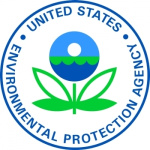- Sektör: Government
- Number of terms: 11955
- Number of blossaries: 0
- Company Profile:
U.S. Environmental Protection Agency (EPA) is a federal agency responsible for the development and enforcement of regulations for human health and environment protection. The agency researches and sets standards for environmental programs and delegates. It was founded in 1970 following the proposal ...
A pesticide manufacturer that has registered a pesticide product.
Industry:Agricultural chemicals
Formal listing with EPA of a new pesticide before sale or distribution. EPA is responsible for pre-market licensing of pesticides on the basis of data demonstrating no unreasonable adverse health or environmental effects when applied according to approved label directions.
Industry:Agricultural chemicals
The ratio of the toxic potency of a given chemical to that of an index chemical in the CAG. Relative potency factors are used to convert exposures of all chemicals in the CAG into their exposure equivalents of the index chemical.
Industry:Agricultural chemicals
Any spilling, leaking, pumping, pouring, emitting, emptying, discharging, injecting, escaping, leaching, dumping, or disposing into the environment of a hazardous or toxic chemical, or extremely hazardous substance.
Industry:Agricultural chemicals
The actual construction or clean-up phase of a Superfund site cleanup.
Industry:Agricultural chemicals
Any chemical which can be used to drive away insects, bears, dogs, or other pests.
Industry:Agricultural chemicals
Research which examines the recalcitrance, bioavailability, toxicity, solubility, etc. of pesticide residues. More information on this topic can be found at the FDA site for residual pesticides monitoring.
Industry:Agricultural chemicals
A pesticide that can be sold to or used by only certified applicators.
Industry:Agricultural chemicals
A measure of the chance that damage to life, health, property, or the environment will occur.
Industry:Agricultural chemicals
A methodology used to examine all possible risks involved with a particular product or organism. Risk assessment can be divided into four parts: identification of hazards, dose response (how much exposure causes particular problems (ie.cancer, convulsions, death), exposure assessment (determining how much exposure will be received by people during particular activities), and risk characterization (determining a probability that a risk will occur).
Industry:Agricultural chemicals
